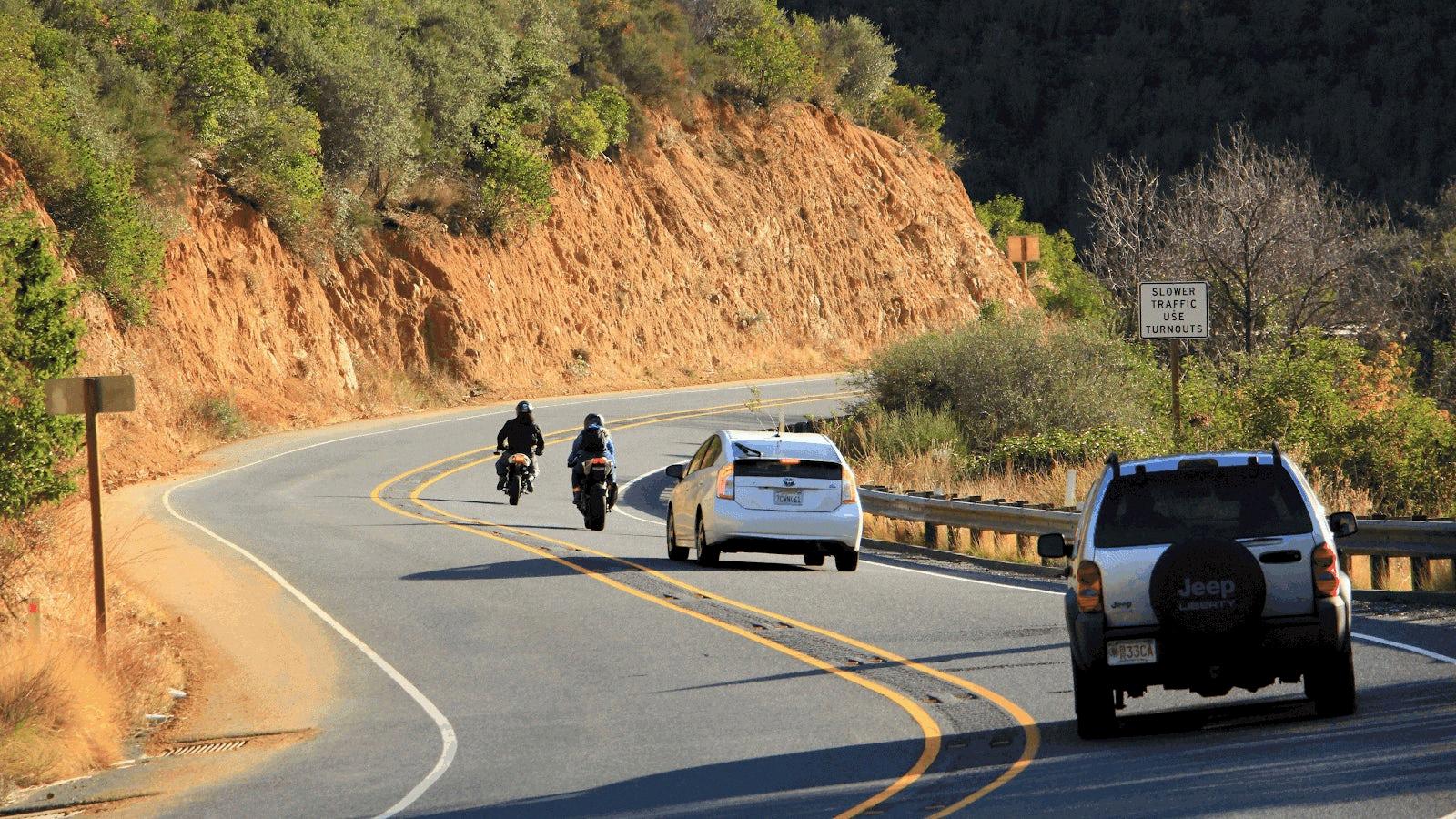Turnout areas, also known as pullouts, are special sections located on two-way highways that are designed to facilitate a smooth flow of traffic. These areas are meant to provide a safe and convenient space for vehicles to pull over and allow other cars to pass.
The main purpose of turnout areas is to help drivers avoid risky passing maneuvers, which can be particularly dangerous on narrow roads with limited visibility. By providing an area for slower vehicles to move aside, other drivers can overtake safely and without causing any accidents.
Turnout areas are typically marked with road signs and painted lines on the pavement. They may be located on the right or left side of the road, depending on the specific roadway design and traffic patterns. Some turnout areas are large enough to accommodate several vehicles, whle others are designed for just one or two cars at a time.
In addition to turnout areas, some roads may also have designated passing lanes to help drivers overtake slower vehicles. These lanes are usually wider than standard lanes and may be separated from the rest of the road by a solid white line. Drivers should only use passing lanes when it is safe to do so and when there is no oncoming traffic.
It is important for all drivers to be aware of turnout areas and passing lanes on the roads they travel. If you are driving slower than the speed limit or are holding up traffic for any reason, you should be prepared to pull over into a turnout area to allow other drivers to pass. Similarly, if you are overtaking a slower vehicle, you should only do so in a designated passing lane or when it is safe to do so.
Turnout areas and passing lanes are important elements of safe and efficient driving on two-way highways. By using these designated areas appropriately, drivers can avoid dangerous passing maneuvers and help ensure a smooth flow of traffic for all.
What Is A Turn Out On The Road?
A turnout on the road is a designated area where vehicles can pull over to the side and allow other vehicles to pass. These areas are typically found on two-way highways and are marked to indicate their location. Turnouts are useful for drivers who may be driving slower than the flow of traffic or who need to stop for a brif period of time. They are designed to improve traffic flow and reduce congestion on the road. In some cases, turnouts may be replaced by passing lanes, which are designated areas where drivers can safely pass slower vehicles. Passing lanes are typically longer than turnouts and may be marked with dashed lines to indicate their use.

What Are Turnouts For?
Turnouts are designed to facilitate smooth traffic flow on roads where overtaking is challenging or impossible. These areas are typically located alongsie the road and allow drivers to enter them to let other vehicles pass safely. Turnouts are especially useful for slower vehicles that may be holding up traffic. By entering a turnout, these vehicles can allow other vehicles to pass them without causing any disruption to the flow of traffic. Turnouts are also helpful in preventing congestion on narrow or winding roads, as they allow vehicles to pass each other without causing delays or accidents. turnouts are an essential part of traffic management and help ensure that roads remain safe and efficient for all users.
What Is A Vehicle Turn Out?
A vehicle turn out, also known as a slow vehicle turnout, is a designated area on a road that allows slower moving vehicles to pull over and let faster traffic pass. These turnouts are typically marked with signs and are located on roads where it is unsafe or impossible to provide a full overtaking or climbing lane. Slow vehicle turnouts are designed to improve traffic flow and prevent accidents by reducing the need for drivers to pass slower vehicles in unsafe or restricted areas. They are particularly useful on steep hills or winding roads where visibility is limited and passing can be dangerous. Slow vehicle turnouts may also be used by emergency vehicles to pass slower vehicles dring an emergency situation.
How Do I Know Which Lane To Be In?
When approaching a junction, it is important to pay attention to road signs and lane markings. These will typically indicate which lane you need to be in to follow your desired route. If you are unsure, it is generally advisable to choose the left lane unless you specifically need the right lane for your intended turn. This can help you avoid the need to switch lanes afer turning, which can be both dangerous and frustrating for other drivers on the road. Additionally, it is important to stay alert and aware of your surroundings, as unexpected road closures or changes in traffic patterns can require you to adjust your lane positioning on the fly. By staying focused and following the guidance of road signs and lane markings, you can ensure a safe and efficient journey through any junction or intersection.
Conclusion
Turnout areas are important features on two-way highways that help promote safe and efficient traffic flow. They provide a designated space for slower vehicles to pull over and allow faster traffic to pass, which reduces the risk of accidents and frustration for drivers. Turnout areas are particularly useful in areas where passing lanes are not available or where overtaking is difficult. As a driver, it is important to be aware of tese areas and use them when necessary to promote safe and courteous driving habits. By following road signs and lane markings, drivers can easily navigate to the correct lane and make use of turnout areas where needed. turnout areas play an important role in promoting safe and efficient traffic flow on our roads.
